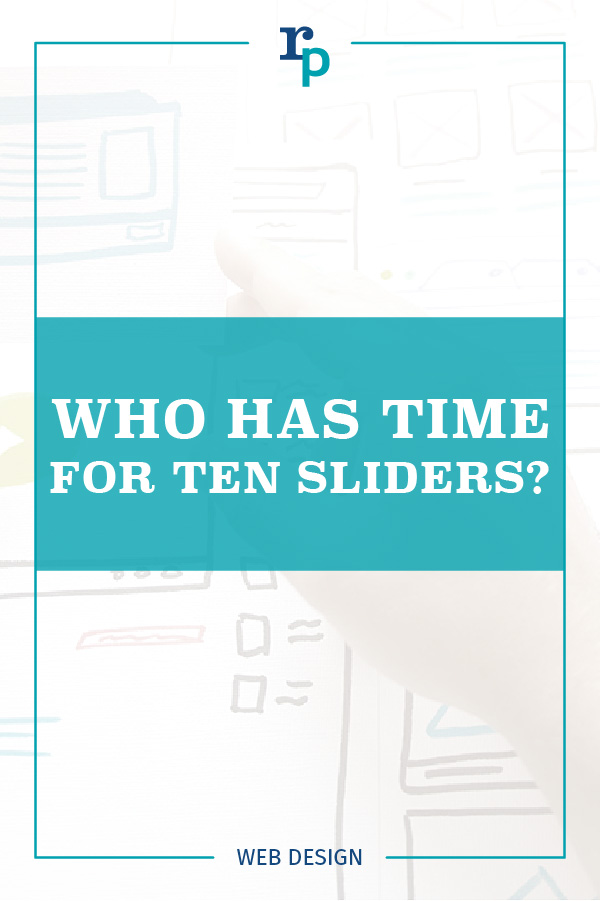Who Has Time for Ten Sliders?
We were building a website for a school and the director gave us ten images for the home page. TEN IMAGES!!!! She envisioned a slider with ten separate messages changing every few seconds. If you haven’t figured out by now, I firmly believe this is not a good idea. Why Not? It boils down to two issues: User experience and SEO.
Image sliders deliver a poor user experience.
If the images and text rotate faster than every three seconds it is hard to read more than one or two words of text. And while twenty seconds doesn’t seem very long, it is an eternity when someone comes to your website looking for information. Research shows that the vast majority of users will simply click away after the first or maybe second image. So if image sliders 3 – 10 actually contain valuable information the users will never see it.
Image sliders don’t add SEO value
Even if you do everything right; name each image correctly, add appropriate descriptions, and use H2 or H3 headers for the text, you won’t get much SEO value. Why? Because the way sliders are typically built, the content is buried inside the slider. Many times search engines don’t see and index the individual content elements.
What should you do instead of using ten images and text on the top of your home page?
- Pick a favorite child. I know, you love all your elements equally, but one is most important. Lead with that. Select the most powerful image and link to the most important information on your website. (Hint that isn’t the about you section). The most important content helps a visitor see that they have come to the right place, to find an answer to their question or a logical first step in your process.
- Make your home page longer. These days the majority of your visitors arrive on your website through a mobile device. It is easier to scroll than to click, so longer pages offer scrollers more choices. The additional benefit is that the search engines will also scroll down the page, indexing each image and title as they slide down the page.
- Top each page with an image. About half the visitors to any website will never stop by the home page. They will arrive at a website through an advertisement or social media post. Greeting them with an attractive image and relevant text improves the user experience. And as an additional benefit, the image, description, and title text will actually improve the SEO on that page.
When do image sliders work?
Don’t get me wrong, I am not anti-slider. There is a time and a place for everything. A slider can be a terrific decorative element, kind of like a background video. The trick is to hold something constant. For example, use one caption and rotate through multiple images. Since the text doesn’t change, the images can switch faster. This is nice if you want to show different people interacting with your product or images of multiple products. Just remember that many people will only see the first two images. Sliders also work as part of a two image reveal. Where the first image is an incomplete picture or phrase and the second fills in the blanks for the audience. Tread lightly here, if the payoff for the viewer isn’t interesting enough, they may leave completely.
Get creative
If they aren’t effective, why do we still see so many sliders? They are easy because you don’t have to make the tough choices and set priorities. Sometimes, web designers will get tired of battling with clients and acquiesce, even though they know it isn’t the best choice. With so many interesting design effects and layouts your website deserves more.

Call to Action Do’s and Don’ts
There is such a thing as a bad call to action The goal of any page on a website, whether it's the...
Let’s Talk Web Navigation
The Web Navigation Bar (aka, the nav & primary menu) The web navigation bar is a custom-built...
Canning Cookies, Creating Cohorts: Google’s Advertising Shift, Explained
The devs over at Alphabet are not just trying to bolster their profit; they’re trying to make something that could be problematic better and more secure.
A Deep Dive into Web Scams
What exactly are web scams? Web scams are illegitimate internet websites used to deceive users...
